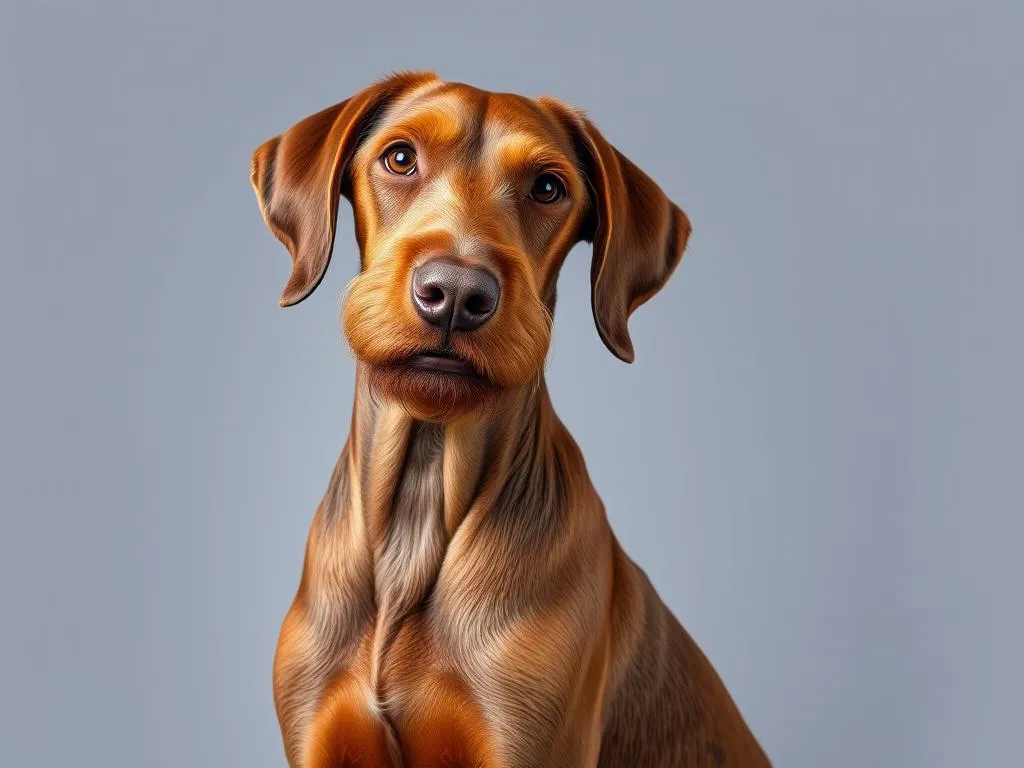
Introduction
The world of dog breeds is vast and diverse, each breed possessing its unique characteristics and charm. Among these breeds, the Hungarian Wirehaired Vizsla stands out due to its rich history, distinctive looks, and exceptional temperament. Originating from Hungary, this versatile breed has captured the hearts of dog lovers around the globe. This article will delve into the various aspects of the Hungarian Wirehaired Vizsla, exploring its history, physical characteristics, temperament, health considerations, and much more.
History of the Hungarian Wirehaired Vizsla
Origins
The Hungarian Wirehaired Vizsla is an ancient breed with roots that trace back to Hungary’s early hunting dogs. The breed was developed in the 1930s by crossing the smooth-coated Vizsla with various wirehaired breeds, aiming to create a versatile hunting dog capable of withstanding harsh conditions. The result was a resilient and intelligent breed that quickly gained popularity among hunters.
Purpose and Function
Originally bred for hunting, the Hungarian Wirehaired Vizsla was designed to be a multi-purpose dog. Its keen sense of smell, strong instincts, and ability to work both on land and in water made it an ideal companion for hunters. Over the years, this breed has also evolved into a cherished family dog, known for its loyalty and affectionate nature.
Physical Characteristics
Size and Weight
The Hungarian Wirehaired Vizsla typically stands between 21 to 25 inches tall at the shoulder and weighs between 45 to 65 pounds. This size places them in the medium to large category, making them a robust and sturdy breed. Compared to similar breeds, such as the Labrador Retriever and the German Shorthaired Pointer, the Vizsla is slightly leaner but equally athletic.
Coat and Colors
One of the most distinguishing features of the Hungarian Wirehaired Vizsla is its unique wirehaired coat, which is dense and water-repellent. This coat requires minimal grooming but should be brushed occasionally to remove loose hair and prevent matting. The breed is typically found in shades of golden rust, which can vary from light to dark, with a distinctively wiry texture that sets them apart from their smooth-coated cousins.
Distinctive Features
The Hungarian Wirehaired Vizsla has several distinctive features, including a robust build, long legs, and a slightly rounded head. Their expressive eyes and long, droopy ears add to their charm. These physical traits are not just for aesthetics; they play crucial roles in hunting, enhancing the breed’s ability to track and retrieve game.
Temperament and Behavior
General Temperament
Known for their friendly and affectionate nature, the Hungarian Wirehaired Vizsla is an excellent companion. They are highly sociable dogs, often forming strong bonds with their families. Their gentle demeanor makes them great with children and other pets, though early socialization is essential to ensure they develop into well-rounded adults.
Energy Level and Exercise Needs
This breed is known for its high energy levels and requires regular exercise to stay healthy and happy. Daily activities such as long walks, runs, or play sessions in a secure area are crucial. A good rule of thumb is to provide at least 60 to 90 minutes of exercise each day, including both physical and mental stimulation to prevent boredom.
Intelligence and Trainability
The Hungarian Wirehaired Vizsla is an intelligent breed, eager to learn and please its owners. This intelligence makes them relatively easy to train, but they can also be stubborn at times. Positive reinforcement methods, such as treats and praise, work best in encouraging desired behaviors. Consistency and patience are key when training these dogs, particularly when teaching commands or addressing behavioral issues.
Health Considerations
Common Health Issues
Like all breeds, the Hungarian Wirehaired Vizsla is prone to certain health concerns. Some of the more common issues include hip dysplasia, elbow dysplasia, and certain eye conditions. Regular veterinary check-ups and a good understanding of the breed’s health history can help catch potential problems early.
Lifespan
The average lifespan of a Hungarian Wirehaired Vizsla is around 10 to 14 years. Factors influencing longevity include genetics, diet, exercise, and overall care. Providing a healthy lifestyle can significantly impact their quality of life and lifespan.
Nutrition and Diet
A well-balanced diet is crucial for maintaining the health of a Hungarian Wirehaired Vizsla. High-quality dog food that meets their energy needs is essential, especially given their active lifestyle. Consult with a veterinarian to determine the best dietary plan, taking into account age, weight, and activity level.
Living with a Hungarian Wirehaired Vizsla
Ideal Living Conditions
The Hungarian Wirehaired Vizsla adapts well to various living environments, but they thrive in homes with ample space to run and play. While they can live comfortably in urban settings, they require regular access to parks or open areas for exercise. In rural settings, they can enjoy the freedom to explore, which suits their adventurous spirit.
Socialization and Family Dynamics
Early socialization is vital for the Hungarian Wirehaired Vizsla. Introducing them to various environments, people, and other animals at a young age helps them develop into well-adjusted adults. They are known for their friendly nature and generally get along well with children and other pets, making them an excellent addition to family life.
Grooming and Maintenance
Grooming the Hungarian Wirehaired Vizsla is relatively straightforward due to their wiry coat. Regular brushing helps maintain coat health, while occasional baths keep them clean. Routine dental care, nail trimming, and ear cleaning are also essential parts of their grooming regimen to ensure overall health.
Training and Activities
Basic Obedience Training
Training a Hungarian Wirehaired Vizsla should begin early, focusing on basic obedience commands such as sit, stay, come, and heel. Consistent training sessions that are kept short and fun will help keep their attention and make learning enjoyable. Using positive reinforcement techniques encourages a strong bond between the dog and owner.
Activities and Sports
The Hungarian Wirehaired Vizsla excels in various dog sports, including hunting trials, agility, and obedience competitions. Engaging in these activities not only provides physical exercise but also mental stimulation, which is vital for this intelligent breed. Owners should explore different activities to find what their dog enjoys the most.
Behavioral Challenges
Like any breed, the Hungarian Wirehaired Vizsla can face behavioral challenges, such as separation anxiety or excessive barking. To prevent these issues, it is important to provide adequate exercise, mental stimulation, and companionship. Addressing any concerns early with proper training and socialization can help mitigate potential problems.
Conclusion
The Hungarian Wirehaired Vizsla is a remarkable breed that combines beauty, intelligence, and a friendly disposition. From its origins as a hunting companion to its role as a beloved family pet, this breed continues to win hearts worldwide. With the right environment, training, and care, the Hungarian Wirehaired Vizsla can thrive as a loyal and affectionate companion, making it a wonderful choice for active families and individuals alike.
FAQs
Is the Hungarian Wirehaired Vizsla good with children?
Yes, the Hungarian Wirehaired Vizsla is known for its friendly nature and is generally good with children. They are playful and affectionate, making them great companions for families.
How much exercise does a Hungarian Wirehaired Vizsla need daily?
A Hungarian Wirehaired Vizsla requires at least 60 to 90 minutes of exercise each day. Activities can include walks, runs, and playtime to keep them physically and mentally stimulated.
Are Hungarian Wirehaired Vizslas hypoallergenic?
No, the Hungarian Wirehaired Vizsla is not considered hypoallergenic. While their coat may shed less than some breeds, they can still produce allergens that could affect sensitive individuals. Regular grooming can help manage shedding and dander.





